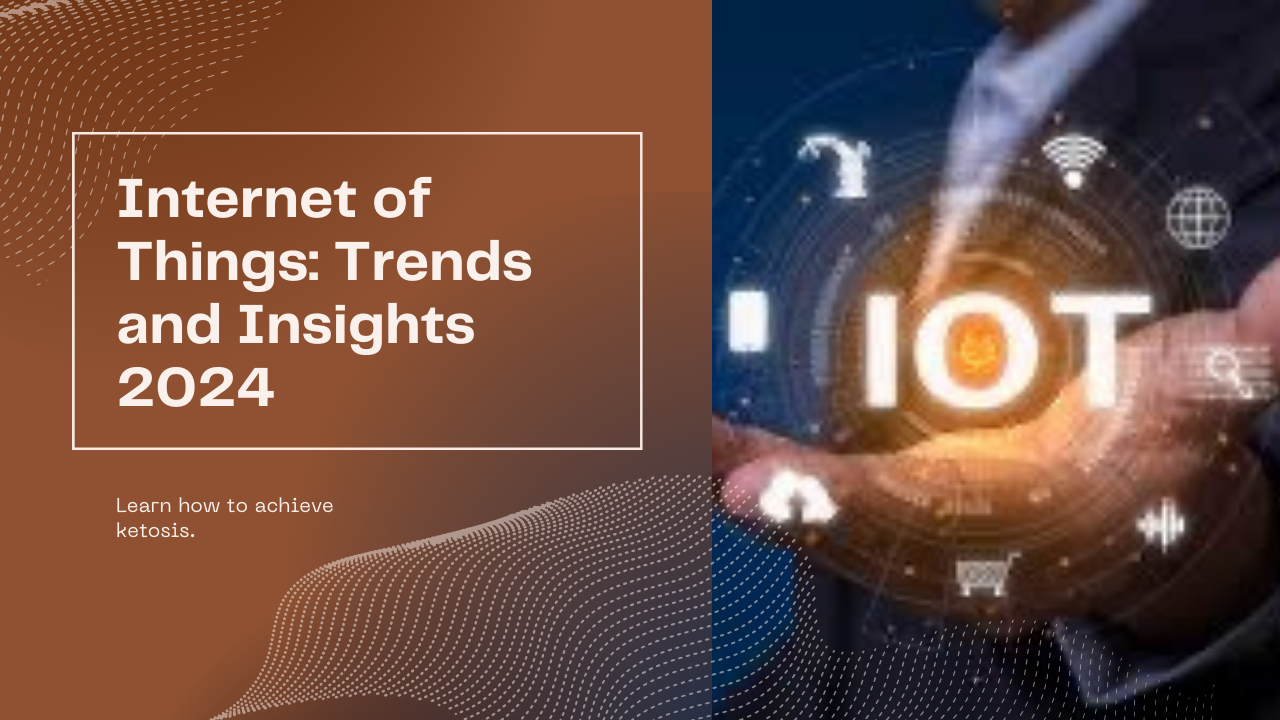In today’s rapidly evolving digital landscape, much buzz surrounds the Internet of Things (IoT). With its capacity to revolutionize industries and redefine consumer experiences, IoT is becoming more pervasive—driven by advancements in connectivity, smart devices, and automation. As we gaze into 2024, it’s essential to uncover new insights and predict the future of IoT, as it continues to reshape our world.
Billions of devices are interconnected, gathering and sharing data in real-time—heralding a new era of efficiency and innovation. These smart devices, which include everything from household appliances to industrial machinery, now form the backbone of a global IoT network, vivifying the concept of a truly connected world.
Automation—one of the pillars of IoT—is not merely an emerging trend but rather, an evolving reality. The ability to control devices remotely and create self-regulating systems has made technology remarkably user-friendly, setting the stage for an even more connected and automated future.
Key Takeaways
- Exponential growth and integration of IoT
- Increasing prevalence of smart devices in various sectors
- Expanded connectivity is continually enhancing IoT capabilities
- Automation is driving the future of consumer experiences and industry functions
- The future of IoT in 2024 foresees even higher levels of intelligence, connectivity, and automation
Emerging Technologies in the Internet of Things
In the continuously expanding realm of the Internet of Things (IoT), several ground-breaking advancements have steered the direction and pace of technology innovation. Intricate sensors, sophisticated machine-to-machine communication protocols, and the synergistic integration of AI catalyze the evolution of IoT, heralding a new era of smart technology.
Advancements in Sensor Technology
The evolution of sensors has always shaped the journey of smart technology. The latest IoT Developments have witnessed the creation of sensors that are smaller, more efficient, and cost-effective. This has enabled their omnipresence in IoT systems, capturing real-time data with precision and reliability. From healthcare monitoring systems to industrial automation setups, these advanced sensors facilitate agile decision-making processes by comprehending environmental variables with remarkable accuracy.
Expansion of Machine-to-Machine Communication Protocols
Machine-to-machine communication protocols are becoming more advanced as the digital age advances, facilitating seamless, human-independent device interactions. The surge in the reliance on IoT protocols testifies to their role in expediting automation, contributing to the realization of truly responsive and automated systems. This expansion sets the stage for breakthroughs in IoT connectivity, adding a new dimension to smart device interaction.
Integration of AI and IoT for Enhanced Data Analysis
Another significant aspect of the ongoing technological revolution is the integration of Artificial Intelligence (AI) with IoT. This convergence establishes an efficient data analysis framework, capable of processing and interpreting the enormous volume of data generated by IoT devices. AI’s role in facilitating data analysis has led to a transformative shift in technological operations, enabling the implementation of adaptive and predictive systems across various sectors.
| Technology Innovation Area | Key Characteristics | Implications |
|---|---|---|
| Sensor Technology | Small, efficient, cost-effective sensors | Improved real-time data capture and smart decision-making |
| Machine-to-Machine Communication Protocols | Expanded IoT protocols enabling seamless device interaction | Boosting automation and enhancing smart device interaction |
| Integration of AI and IoT | AI-driven data analysis of IoT-generated data | Enabling adaptive and predictive systems across sectors |
The Internet of Things and Smart Cities
The emergence of the Internet of Things (IoT) has been instrumental in driving the transformation of urban centers into smart cities, characterized by a confluence of technology and urban development initiatives worldwide. This rapid transformation has given rise to a new generation of infrastructural solutions that leverage connected devices to optimize resources, improve city services, and enhance overall quality of life.
The rigorous integration of IoT technologies within urban spaces has shown immense potential for bringing sustainable infrastructure solutions to the fore. The implications of this have been wide-ranging and impactful, from facilitating traffic management through signal automation to streamlining waste management through sensors embedded within smart bins.
“The Internet of Things is revolutionizing urban infrastructures, ushering an era of smart cities that leverage advanced technology for sustainable urban development.”
As part of this evolution, various city services have witnessed unprecedented levels of automation, making them significantly more efficient and sustainable. Here, the role of innovative infrastructure cannot be overstressed. The coupling of smart technologies with infrastructural elements within a city has been a game-changer on many fronts, notably in the following:
| Components of Smart City | Impact of IoT |
|---|---|
| Transportation | Real-time traffic updates, optimized route suggestions, predictive maintenance of public transport vehicles. |
| Environment | Precise forecasting, pollution monitoring and control, efficient water and waste management. |
| Public Safety | Real-time traffic updates, optimized route suggestions, and predictive maintenance of public transport vehicles. |
| Energy | Surveillance enhancement, disaster management, and emergency services coordination. |
As we look ahead, the exponential advancements of IoT technologies are expected to further push the boundaries of smart city development, leading us into a future where urban centers are more connected, efficient, and sustainable. The way forward is clear: The intersection of IoT and urban development is the key to unlocking a smarter, more innovative city infrastructure.
Internet of Things: Connectivity and Security Challenges
As the Internet of Things (IoT) continues to expand, it brings with it a new array of complexities. At the very core of these complexities lie two pivotal issues: connectivity and security. This section delves into our current efforts and strategies for maintaining robust, reliable IoT connectivity and securing network-enabled devices against a wide spectrum of cybersecurity threats.
Improving Network-Enabled Device Security
With the surge in the adoption of IoT technology, device security has become paramount. Cybersecurity threats pose a significant risk to network-enabled devices, especially as they begin to permeate critical sectors such as healthcare and manufacturing. Strategies being developed to counter these threats include proactive threat detection processes, the usage of strong, unique credentials, and the implementation of encryption protocols. This not only ensures the protection of data but also guarantees the reliability of the interconnected systems.
Addressing Privacy Concerns in IoT Ecosystems
In the era of IoT, where devices are designed to collect and process personal data continuously, privacy concerns have certainly surged. Balancing the growth of IoT implementations with the necessity of data protection and technology ethics is no easy task. Key steps in tackling these privacy concerns include enhancing individual control over data, proactive regulation, and fostering trust through transparency in the IoT space. These measures build the foundation for secure and ethical IoT ecosystems that respect individual privacy.
Developing Robust Connectivity Solutions for Varying Environments
The pursuit of robust connectivity is a catalyst for IoT’s success. Reliable connectivity solutions are fundamental in maintaining consistent performance across varying IoT environments – from bustling urban centers to remote rural settings. Leveraging technological advancements, we can overcome challenges such as signal interference and bandwidth limitations, paving the way for the reliable operation of IoT devices in a multitude of settings. Smart technology solutions that deliver robust connectivity are, without a doubt, critical components in IoT’s transformative journey.
Conclusion
Taking stock of the boundless landscape that is the Internet of Things (IoT), it’s clear that the forthcoming wave of breakthroughs paints a promising picture for 2024. The transformative union of various emerging technologies is not only spurring the growth of IoT but it is also redesigning the way industries function and people live. The vibrant ecosystem of IoT, driven by relentless innovation, holds the potential to redefine our understanding of automation, connectivity, and smart solutions.
The expanse of IoT is expanding, thanks to advancements in sensor technology, machine-to-machine communication protocols, and the integration of Artificial Intelligence (AI). An influx of sophisticated, cost-effective sensors and booming AI technology signal a future of actionable insights, predictive systems, and heightened automation across industries.
On the other hand, we cannot turn a blind eye to the increasing concerns about cybersecurity and privacy in the IoT ecosystems. As manufacturers grapple to develop robust connectivity solutions, they also need to ensure an unwavering commitment towards securing network-enabled devices and protecting user privacy. Expect to see a concentrated effort towards improving security measures and addressing privacy concerns inform the trends and IoT insights of 2024.
It’s abundantly clear that the convergence of these exponential technologies will reshape the future of IoT, promising a future replete with intelligent, interconnected systems. As we reflect on the impact of these smart technology advancements, we envision a world where daily life and operations are transformed significantly. In a nutshell, we are heading towards an era where the technology of tomorrow is being shaped by the insights and trends surfacing in IoT today.
FAQ
What major trends can we expect in the Internet of Things (IoT) by 2024?
We can anticipate an amplified proliferation of smart devices across various sectors, along with continued advancements in the fields of automation and connectivity. These elements are expected to reshape industries progressively, redefine consumer experiences, and drive the future of IoT.
How are advancements in Sensor Technology impacting the landscape of IoT?
Innovations in sensor technology have made sensors smaller, more efficient, and cost-effective, leading to their widespread deployment in IoT systems. These improvements are enhancing real-time data capture and analysis, enabling smarter decisions in diverse sectors, including healthcare and industrial automation.
How is Machine-to-Machine Communication contributing to the IoT ecosystem?
The advancement and expansion of machine-to-machine communication protocols facilitate seamless smart device interactions without human intervention. These protocols are contributing to the automation trend, making systems more responsive and self-regulating. This sets the stage for major breakthroughs in IoT connectivity.
What is the role of AI in IoT?
Artificial Intelligence, when integrated with IoT, has a transformative impact on data analysis. AI algorithms can process vast amounts of IoT-generated data, leading to actionable insights and enabling adaptive and predictive systems across industries.
How is IoT influencing the development of smart cities?
IoT plays a significant role in driving the smart city revolution, leading urban centers towards innovative infrastructure solutions. Connected devices and systems in smart cities optimize resources, improve city services, enhance the quality of life, and lead to sustainable urban development through automation and intelligent design.
What are the major security challenges in IoT?
With the growth of IoT networks, security challenges have been amplified. There is a need for improved security measures for network-enabled devices and current developments and best practices are being implemented to secure IoT devices against cyber threats, ensuring the reliability and safety of interconnected systems.
How are IoT ecosystems addressing privacy concerns?
IoT ecosystems are navigating the complexities of data protection and technology ethics, outlining strategies to protect user privacy while facilitating the growth of IoT implementations. This includes efforts to secure personal data collected and processed by devices.
How are connectivity solutions being developed for varying environments?
Technological advancements are being pursued to develop robust connectivity solutions that maintain consistent performance across varied environments. These promising advancements aim to enable IoT devices to operate reliably in both urban and remote settings, overcoming challenges like signal interference and bandwidth limitations.
How is IoT expected to shape our future?
Reflecting on the showcased trends and insights, IoT is posed to have a significant impact on our daily life and operations across multiple sectors. From redefining experiences with smart technology advancements to enhancing security and privacy measures, IoT is likely to continue shaping the evolution of technology and connectivity.










